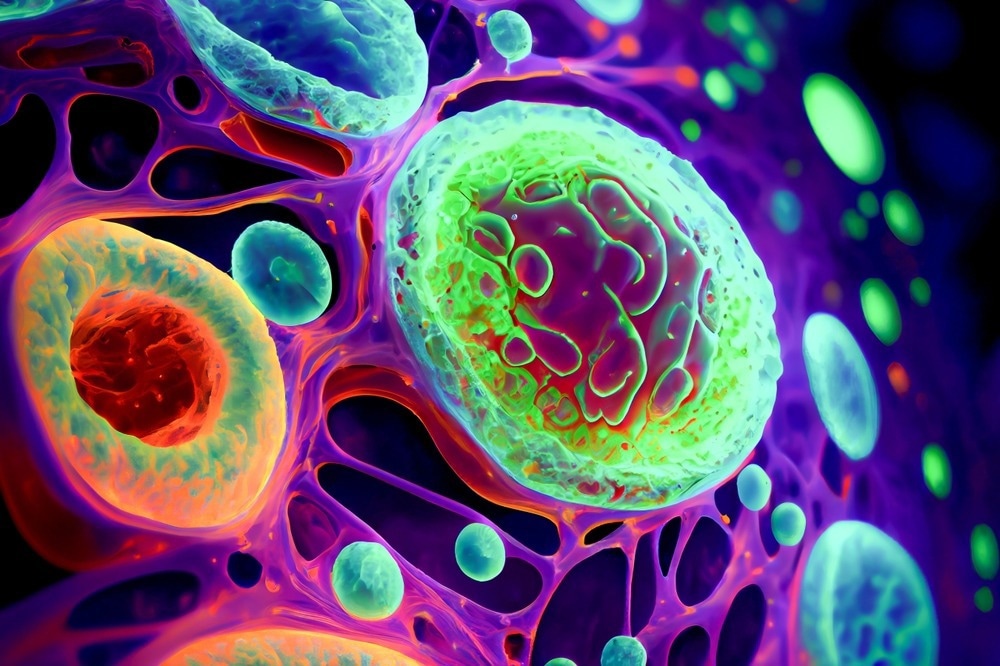A recent study indicates that a protein responsible for generating force in individual cells operates differently when cells are part of a collective movement.

Image Credit: Kateryna Kon/Shutterstock.com
In processes such as organ formation in embryos, wound healing, pursuit of invading bacteria, and even spreading cancer, cells exert forces by pushing and pulling on each other and the surrounding tissue.
Conducted by researchers from NYU Grossman School of Medicine, the investigation focused on a group of 140 cells known as the primordium, which adhere to each other while relocating within zebrafish embryos. Zebrafish serve as a significant developmental model due to their transparency and shared cellular mechanisms with humans.
The findings elucidate how the cells within the primordium utilize a protein called RhoA to initiate forces that propel the group during embryonic development. In this process, cells extend protrusions, grasp nearby tissues with these extensions, and then retract them—resembling the action of casting and hauling in an anchor to advance forward.
The study was reported in the journal Current Biology on December 13th, 2023.
This finding surprised us because we had no reason to suspect that the RhoA machinery required to move groups of cells would be different from that used by single cells.”
Holger Knaut, Ph.D., Study Senior Author and Associate Professor, Department of Cell Biology, NYU Langone Health
Previous research indicated that individual cells move forward by activating RhoA at their rear ends. This activation of RhoA stimulates the motor protein non-muscle myosin II, causing the cells’ rear ends to constrict and release from the surface they are traversing.
In contrast, a recent study revealed a different mechanism in the cells of the primordium. Instead of activating RhoA at their rear ends, these cells pulse RhoA at the front, where it performs two functions. Firstly, at the front tip of the cell, RhoA promotes the outward growth of the cell's skeleton, known as the actin meshwork, creating protrusions that grip the surface.
Secondly, at the base of these protrusions, RhoA induces non-muscle myosin II to exert force on the actin meshwork, retracting the protrusions. This action by myosin II causes the actin to flow toward the center and back of the cells, propelling the cell group forward, akin to how a banana slug moves along the ground.
Our findings suggest that RhoA-induced actin flow on the basal sides of cells constitutes the motor that pulls the primordium forward, a scenario that likely underlies the movement of many cell groups.
Holger Knaut, Study Senior Author and Associate Professor, Department of Cell Biology, NYU Langone Health
Knaut added, “The machinery suggests that the movement of single cells and groups of cells is similar, but that RhoA contributes to that machinery differently in each case. Within moving cell groups, RhoA generates actin flow directed toward the rear to propel the group forward.”
Dr. Knaut emphasizes that gaining a more comprehensive understanding of the mechanisms governing the movement of cell groups holds promise for impeding cancer progression. This insight could potentially inform the development of treatments designed to inhibit the actions of proteins identified in the study.
Source:
Journal reference:
Qian, W., et al. (2023) Pulses of RhoA signaling stimulate actin polymerization and flow in protrusions to drive collective cell migration. Current Biology. doi.org/10.1016/j.cub.2023.11.044.